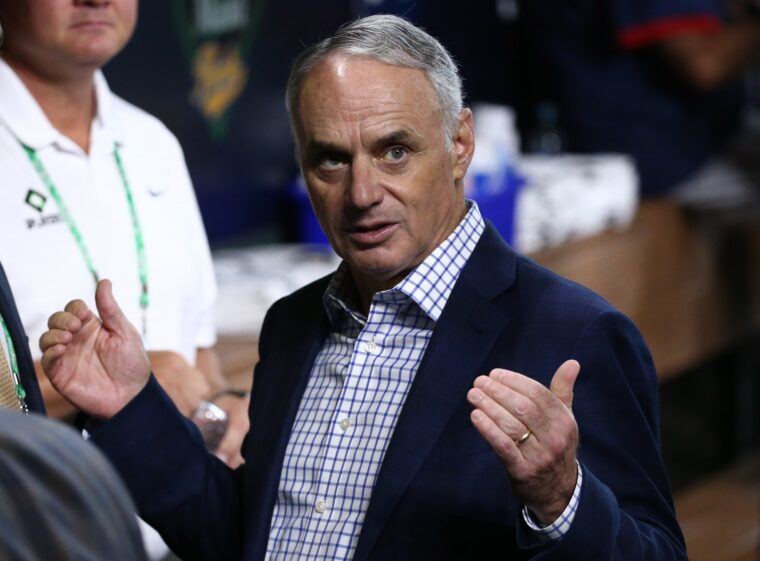
Troy Taormina-USA TODAY Sports
Major League Baseball owners, recognizing the road to implementing a hard cap on players’ salaries may be long and difficult (if not impossible), are discussing ways to restrain spending in other areas. Technology, player development, and scouting seem to be the areas targeted for reduced expenditures.
In an article in The Athletic by Ken Rosenthal and Even Drellich, the authors note that MLB Vice President of Baseball Operations, Morgan Sword, has discussed with several owners the idea of their working together to agree on spending limits in the areas referenced above. An MLB spokesperson is quick to point out that at this point, personnel are not in scope (even though scouting is called out).
“There is nothing happening on that front,” the spokesperson said. “What we are focused on is gathering information on vendor costs to find potential cost savings through efficiencies and to ensure equal access to all technology.”
The above may sound like a violation of antitrust laws, especially if agreed-upon spending limits ultimately affect personnel. Antitrust laws prevent entities that are supposed to be in competition from working together in some way to restrain a free market and limit competition. MLB’s long-standing antitrust exemption would be once again put to the test (it has survived for nearly 100 years).
While the legalities of teams working together to curb spending would need to be sorted out, the whole exercise seems to be an effort to prevent larger-market clubs from dominating those from smaller markets, both in spending and on the field. However, at least this season, the large-market clubs are not sitting atop of the baseball world. From the article:
But with roughly 40 percent of the season complete, the standings suggest concerns over market size and competitive balance could be overwrought. Entering Tuesday, four revenue-sharing recipients — the Rays, Twins, Pirates and Diamondbacks — were in first place. Three others — the Marlins, Brewers and Orioles — were in position for wild cards.
Likewise, some teams would abhor the idea of spending limits, arguing that investing in technology or player development is a way of creating a fair advantage over other teams.
At one point earlier this season, commissioner Rob Manfred called the focus on analytics “an arms race to nowhere.” The Mets are in that arms race, having tripled their analytics group under the ownership of the Cohens.
A question to ask would be, is this about curbing spending in an area where MLB can do so, to allow small-market teams to have the chance to compete, or is this part of Manfred’s plan to refocus baseball on “old-school” balls in play, doubles and triples, stolen bases, and faster games, and away from the “three true outcomes?”
In the bigger picture, MLB may be accepting the idea that a salary cap is not going to happen. The Major League Baseball Players Association has repeatedly stated that the players will never agree to it, and shutting the game down over a labor dispute would be unwise for both sides. In response, the owners are trying to find ways to limit the expense side of the profit equation while attempting to put a more exciting product on the field (with expanded playoffs) to increase revenues.
The idea of working together to limit non-player spending may seem misguided (and possibly illegal), and it likely would be challenged in court. However, it’s a better option than trying again for a restraint on players’ salaries, which will, once again, result in a labor dispute and possible shutdown of the sport.
Maybe this can be seen as a type of progress.















